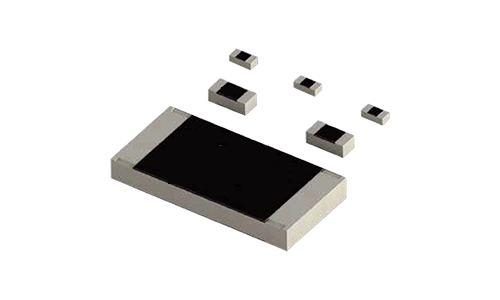What size is a common through-hole resistor?
Through-hole resistors are fundamental components in electronic circuits, playing a critical role in controlling the flow of electric current. They come in various sizes and specifications, and understanding these dimensions is essential for anyone involved in electronics design or assembly. This article delves into the definition of through-hole resistors, their standard sizes and footprints, manufacturing standards, and other important considerations. We will also highlight how unikeyic Electronics offers reliable brands like UNI-ROYAL and YAGEO for your through-hole resistor needs.
Definition of Through-Hole Resistors
Through-hole resistors are resistive components designed for insertion into a PCB (printed circuit board) through pre-drilled holes. Unlike surface-mount devices (SMDs), which sit flat against the board, through-hole resistors extend through the PCB, providing a strong mechanical connection. They are primarily used to limit current, divide voltage, and set biasing conditions in various electronic circuits. Their robust construction makes them ideal for applications that require higher power ratings and durability.
Through-hole resistors Standard Sizes and Footprints
Through-hole resistors come in a range of standard sizes, commonly categorized by their power ratings. The most frequently used sizes include:1/8W Resistors: These are among the smallest through-hole resistors, typically with a footprint of around 3.2 mm × 6.4 mm (0.125 in × 0.25 in). They are used in low-power applications where space is limited.
1/4W Resistors: The 1/4W resistor is the most common size, featuring a footprint of approximately 6.3 mm × 2.5 mm (0.25 in × 0.1 in). This size balances performance and space efficiency, making it suitable for a wide range of applications.
1/2W Resistors: These resistors have a larger footprint of about 6.3 mm × 3.1 mm (0.25 in × 0.125 in). They are used in applications that require higher power dissipation.
1W and 2W Resistors: For more demanding applications, resistors rated at 1W or 2W are also available, featuring larger footprints that accommodate their increased power-handling capabilities.
Understanding the standard through-hole resistor footprint is crucial when designing PCBs to ensure compatibility and ease of assembly.
Through-hole resistors Manufacturing Standards
Through-hole resistors are produced following various industry standards to ensure consistency and quality. Two key organizations setting these standards are the Electronic Industries Alliance (EIA) and the International Electrotechnical Commission (IEC). These standards outline specific dimensions, tolerances, and performance characteristics that manufacturers must adhere to, ensuring that components can be universally utilized in various electronic designs.
Impact of Size on Performance
The size and footprint of a through-hole resistor significantly influence its performance characteristics. Larger resistors generally have higher power ratings, allowing them to dissipate more heat without failing. For instance:Heat Dissipation: A larger resistor can better manage heat, reducing the risk of thermal damage and ensuring longer operational life.
Voltage Rating: The physical size of the resistor often correlates with its voltage rating. Smaller resistors may be limited in the maximum voltage they can handle.
Stability: Precision through-hole resistors are designed with tighter tolerances and better temperature coefficients, which enhance their performance in critical applications.
Application Considerations
When selecting through-hole resistors, understanding the application is essential. Key considerations include:PCB Layout: The physical dimensions of the resistor must fit the PCB design. Proper layout ensures that there’s sufficient space for heat dissipation and avoids overcrowding.
Component Density: In designs where space is at a premium, selecting the right size of through-hole resistor can impact overall component density and functionality.
Application Requirements: Specific applications may necessitate precision resistors with tighter tolerances, especially in audio, RF, or timing circuits.
Comparison with Surface-Mount Resistors
through hole resistors and surface-mount resistors each have unique advantages and limitations:Size and Footprint: Surface-mount resistors are generally smaller, allowing for more compact PCB designs. However, through-hole resistors are often preferred for their mechanical stability and ease of replacement.
Usability: Through-hole resistors are easier to handle during prototyping and repairs, while surface-mount devices require specialized equipment for placement and soldering.
Power Handling: Through-hole resistors typically handle higher power levels more efficiently than their surface-mount counterparts, making them suitable for applications requiring robust performance.
Choosing the Right Resistor
Selecting the appropriate through-hole resistor involves several factors:Determine the Required Resistance Value: Calculate the necessary resistance based on the circuit requirements.
Assess Power Ratings: Choose a resistor with a power rating that exceeds the expected dissipation in the circuit to prevent overheating.
Consider Footprint and Layout: Ensure that the resistor’s footprint fits within the PCB design and allows for proper thermal management.
Evaluate Tolerance Needs: For critical applications, select precision through-hole resistors with tight tolerances to ensure consistent performance.
Common Mistakes in Resistor Sizing
Designers often make errors when selecting resistor sizes. Common mistakes include:Overlooking Power Ratings: Selecting a resistor with an insufficient power rating can lead to failure. Always check power dissipation calculations.
Ignoring Thermal Effects: Failing to account for heat generation and dissipation can result in performance degradation or failure.
Neglecting Layout Considerations: Not planning for sufficient space and orientation can complicate assembly and lead to issues in the final product.
Trends in Resistor Design
Current trends in resistor design include:Miniaturization: As electronic devices become smaller and more compact, the demand for smaller resistors is increasing. Manufacturers are adapting to produce smaller through-hole variants without compromising performance.
Material Innovations: New materials are being explored to improve performance, stability, and reliability. This includes advancements in substrate materials and resistor compositions that enhance thermal and electrical characteristics.
Enhanced Tolerances: Precision resistors are increasingly required in high-performance applications, leading to advancements in manufacturing processes and quality control.
Recommended Brands
When sourcing through-hole resistors, it’s essential to choose reputable brands that ensure quality and reliability. Unikeyic Electronics offers a wide selection of through-hole resistors from trusted manufacturers:UNI-ROYAL: Known for their durable and reliable resistors, UNI-ROYAL provides a range of through-hole options suited for both general and specialized applications.
YAGEO: A global leader in passive components, YAGEO offers a vast array of through-hole resistors that excel in performance, precision, and cost-effectiveness.
These brands are well-regarded in the industry, ensuring that you receive components that meet stringent quality standards.
FAQs About Resistor Sizes
1、What is the most common through-hole resistor size?The 1/4W resistor is the most commonly used size due to its versatility and balance of performance.
2、How do I choose the right resistor size for my application?Consider resistance value, power rating, footprint compatibility, and application requirements when selecting a resistor.
3、Can I use a larger resistor in place of a smaller one?Yes, as long as the resistance value is correct, a larger resistor can be used, but ensure it fits within the PCB layout.
4、What are precision through-hole resistors?These resistors have tighter tolerances and better thermal stability, making them suitable for critical applications.
5、Where can I buy high-quality through-hole resistors?
You can source high-quality through-hole resistors from distributors like Unikeyic Electronics, which stocks reputable brands such as UNI-ROYAL and YAGEO.
Conclusion
Understanding the sizes and specifications of through-hole resistors is essential for effective circuit design and assembly. With a variety of standard sizes and footprints available, selecting the right resistor can greatly influence the performance and reliability of your electronic devices. For high-quality through-hole resistors, consider sourcing from Unikeyic Electronics, which offers reliable brands like UNI-ROYAL and YAGEO. By paying attention to these factors, you can ensure that your designs are robust and efficient, tailored to meet the demands of modern electronics. With the right components, you can enhance your projects and contribute to the advancement of technology.
Related through-hole resistors articles recommended
Where to Buy the Best Through-Hole Resistor Kits OnlineSMD Resistors vs. Through-Hole Resistors: What’s the Difference?Through Hole Resistor Packages: What You Need to Know Before BuyingChoosing the Best Through Hole Resistor Kit for Your Circuit DesignsPrecision and Performance: Reviewing the Best Through-Hole Resistors on the Market






















